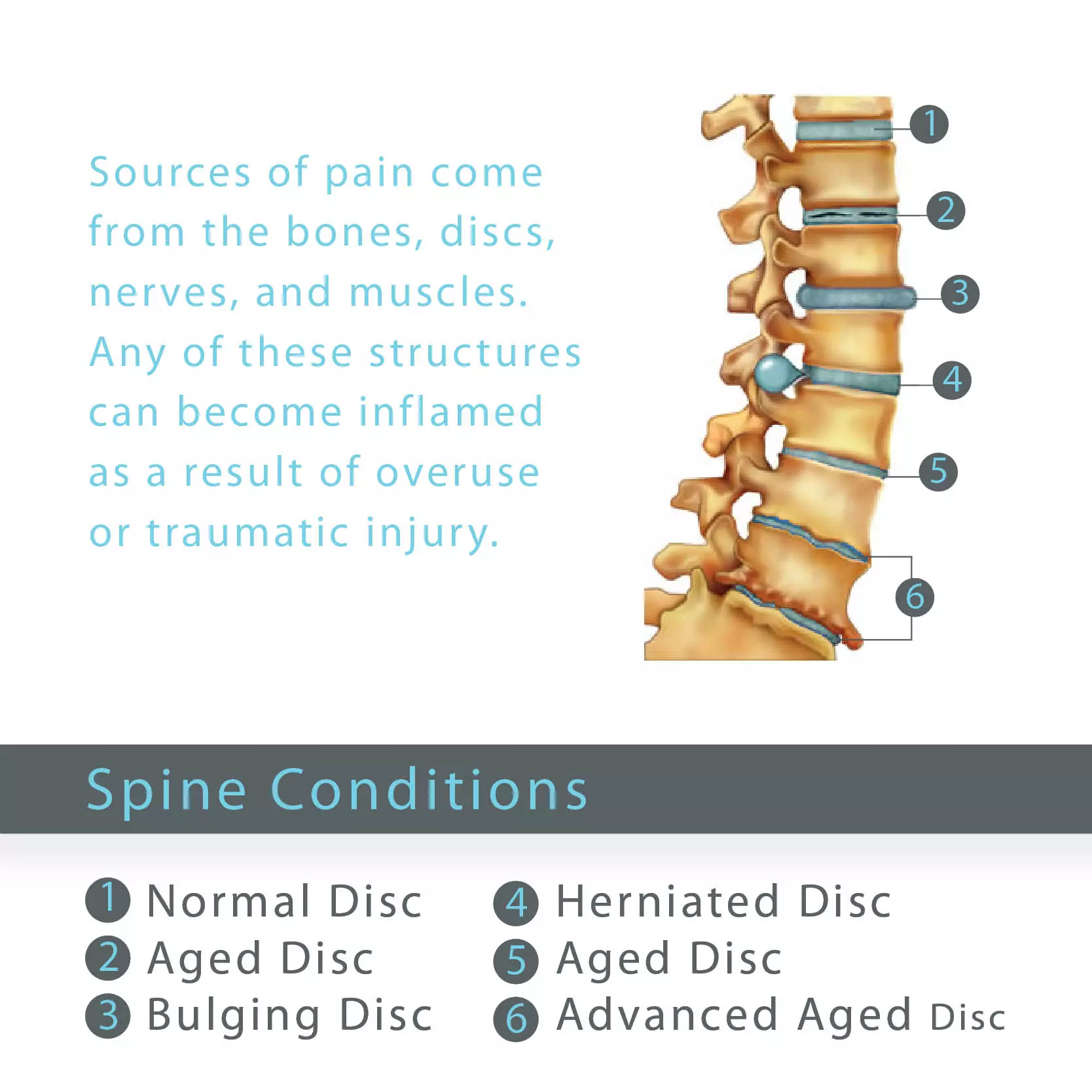- Home
- Patient Care
- Services
- Physical Medicine and Rehabilitation: Musculoskeletal
- Overview
- Spine Pain
Spine Pain
The spine is a bony support for our trunk. The individual bones, vertebra, stack on top of each other creating the spinal column. The spinal cord is in the canal in the center of the vertebra for protection and is the central relay for nerve activity to and from the brain.
At each level of the spine, a nerve exits to provide stimulation to a group of muscles and sensation in a specific area of the skin. Surrounding the boney column are ligaments and muscles. Between the vertebra bodies are discs. The discs work together with the ligaments and muscles to allow for movement of the spine.
The discs between the vertebra contain 70-80% liquid material until about age 30. Around that age, the disc begins to dehydrate as a normal process of aging. This process can be accelerated when a tear occurs in the outer layer of the disc known as the annulus. If the tear results in a piece of the disc protruding beyond its usual confines between the vertebra, it is referred to as a herniated, slipped, ruptured or disc protrusion. When the tear or protrusion occurs, fluid leaks from the disc causing an inflammatory reaction that may be associated with pain. If the disc contacts a nerve, pain may travel along the distribution of that nerve causing pain and even weakness in the arm or leg.
Because the body constantly attempts to heal itself, many cells help to remove this disc material. Because the mechanism involves inflammation and the nervous system, spine pain can be intense. The spine will “exaggerate” what is happening to the brain. Our brain will interpret the signals as they come in as intense.

The good news is that most of the time, the area of injury heals itself in 6-8 weeks. Our job is to help you get through that time.
Reduce Inflammation
Treatment typically begins with reducing inflammation. Applying ice, taking an anti-inflammatory and allowing relative rest for three days will aid in the healing process. Then, you may begin incorporating a low intensity aerobic activity, like walking, based upon your physician's recommendations.
Physical Therapy
Therapeutic exercise as directed by a physical therapist can help with pain reduction, improve movement patterns to reduce repetitive overload and work to prevent future injury. The physical therapist will develop an individualized program for you to perform independently at home to improve faulty movement patterns and improve your core stability.
Commitment to performing the prescribed exercise program will enhance your recovery. This process does not occur immediately; soft tissue changes can be slow and patience is important.
More Info: